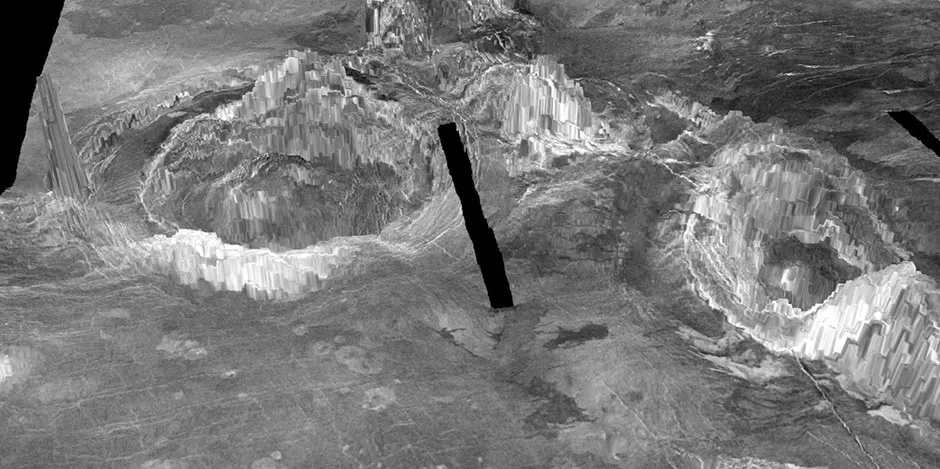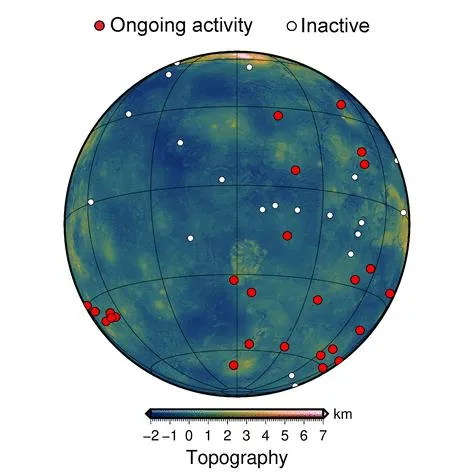Venus is home to at least 37 recently-active volcanic structures, a study by researchers at the University of Maryland and the Institute of Geophysics at ETH Zurich has found. It is the first evidence that the interior of the planet is still geologically active.
Previous studies have found evidence of a warm interior and ring-like structures known as coronae, which form when plumes of hot material deep inside the planet rise through the mantle layer and crust in a manner similar to the way mantle plumes formed the volcanic Hawaiian Islands.
Read more about Venus:
- Race to Venus: What we'll discover on Earth's toxic twin
- Is it true that Venus has its own form of rainbow?
- Could climate change turn Earth into Venus?
However, it was thought that they were signs of ancient activity, and that the planet had cooled enough to slow down geological activity in the planet's interior and harden the crust so much that any warm material from deep inside would not be able to puncture through.
In the new study, the researchers created models of the thermal activity beneath the surface of Venus to create high-resolution, 3D simulations of coronae formation. They then used these to identify features that are present only in recently-active coronae and looked for similar structures on the surface of Venus.

“This is the first time we are able to point to specific structures and say 'Look, this is not an ancient volcano but one that is active today, dormant perhaps, but not dead,'” said Laurent Montési, a professor of geology at the University of Maryland.
“This study significantly changes the view of Venus from a mostly inactive planet to one whose interior is still churning and can feed many active volcanoes.”

The active coronae on Venus are clustered together in a handful of locations, which suggests areas where the planet is most active. This may help identify target areas where geologic instruments should be placed on future missions to Venus, such as Europe's EnVision that is scheduled to launch in 2032.
Reader Q&A: Do any other planets have plate tectonics?
Asked by: Cassy Swan, Leicestershire
The idea that the Earth’s fragmented crust drifts over the hot mantle beneath, often creating earthquakes and volcanoes, only gained widespread acceptance in the 1960s. Some planetary geologists believe that certain surface features on Mars, and the fact that it had active volcanoes during its earliest phase, indicate that the Red Planet may also have several crustal plates.
Apart from this possibility, which is as yet unconfirmed, Earth appears to be unique in the Solar System in having plate tectonics, driven by huge convective loops of hot rock. This may be because the Earth’s interior has remained warm enough for the material to flow easily, and possibly because the Earth’s crust is relatively thin, and so more easily cracked to form plates.
Read more:
